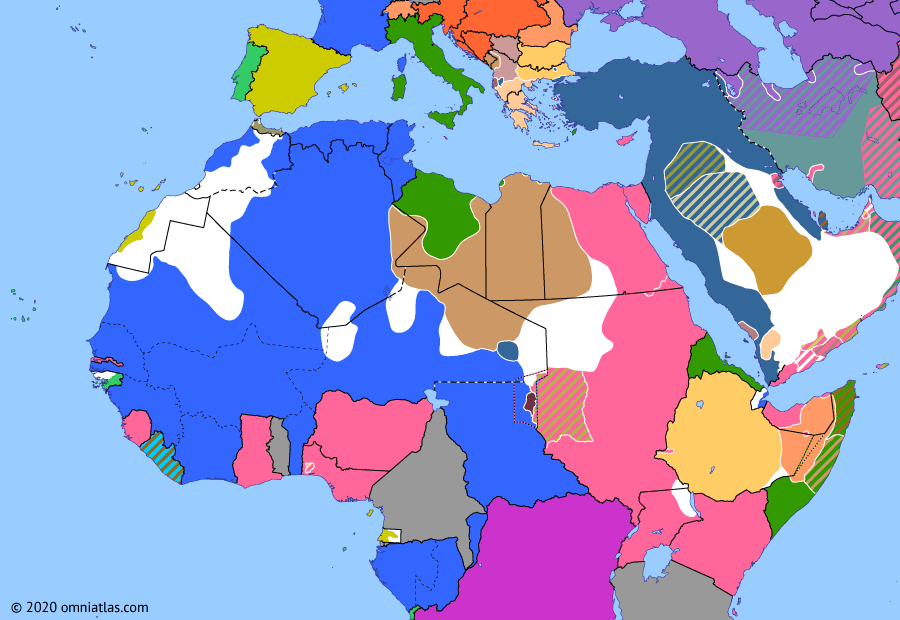Northern Africa 1913: French invasion of the Tibesti

French invasion of the Tibesti
7 Aug 1897 Kitchener in Sudan
2 Sep 1898 Battle of Omdurman
21 Mar 1899 Anglo-French Convention on Sudan
22 Apr 1900 Battle of Kousséri
7 May 1902 Cottenest Expedition
5 Feb 1903 Pacification of Northern Nigeria
25 Oct 1903 Somaliland Campaign
31 Mar 1905 Tangier Crisis
12 Feb 1906 Conquest of the Sahara
16 May 1908 Consolidation of Ethiopia
15 Jan 1910 French Equatorial Africa
1 Jul 1911 Agadir Crisis
10 Oct 1911 Italo-Turkish War
30 Mar 1912 Treaty of Fez
14 Mar 1913 French invasion of the Tibesti
1 Jan 1914 Amalgamation of Nigeria
The Anglo–French Treaty of 1899 placed the Tibesti Mountains (in the central Sahara) within French borders. This claim was disputed by the Ottoman Empire, but when the Ottomans were defeated by Italy in Tripolitania in 1911–12, they were compelled to abandon the region. The French took the opportunity to invade the Tibesti the following year, where they now faced and defeated the Senussi, but were in turn forced to withdraw during the desert revolts of World War I. It would not be until 1929–30 that the French would finally pacify the region.